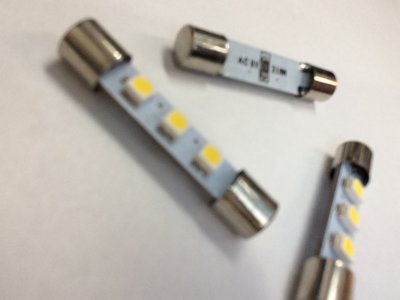|
LUXMAN
vintage
audio |
|
LUXMAN
vintage
audio |
Lafayette LT-725A AM/FM Tuner
General:
Around 1970 issued tuner for USA market, made for the 'Lafayette Radio Electronics' LRE company, in Japan.
front off ^
front on ^
Owners manual:
not yet available
Interior, very well built and very good pcb, but not very nicely repaired, photo made starting the update process ^
Special futures:
This solid-state tuner is with RCA output sockets.
Generously built tuner. Metal wood-look case.
Well build and good parts used.
4 gang variable capacitor, that gives extra selectivity.
High quality tuner with good specs.
This tuner employs all silicon transistors & 2x fets and 4x µA703 - MF - ICs.
The tuner has a stabilized power supply.
Extra -0- centre channel meter setting switch.
2x RCA for Tape out.
Traditional ratio detector and stereo decoder, no modern IC's involved.
Power supply broken ^
Power supply problems:
Due to the detrimental power voltage change from 220 to 240V in the EU:
the secondary power supply Voltage is now > 25 Volt AC, making a total of over 27V DC
and that is ~ 5 volt above max. specification of 22V DC.
There is no 240V AC coil on the transformer.
This means that EU users of this tuner should be carefull with the power supply stabilization, as it will break:
I exchanged the 2SD219 that broke: incapable of handling the >2.5Watts power dissipation, to a 2SD313 (or 2SD880) that is capable of handling the higher power dissipation of approx. 4 Watts max. Increase resistor R4 to 120 Ohms in the power supply to keep the current through Q112 within limits.
A few extra capacitors may be added to the power supply to get it to modern standards. Heatsink the Q112.
This tuner is a true victim of the foolish EU politics in mains-voltage standard: the tuner will stop functioning unless you do the upgrade correctly.
In the USA all this is not an issue.
The pictures show how to do the upgrade correctly.
The power supply was already repaired once, but the power design still did not match the detrimental 220V to 240V~ EU mains Voltage increase,
the stabilization transistor Q112 went to 120°C temperature that is way too high, a bigger heatsink kept the old replaced Q112 alive for some time,
but the upgrade had to be made to prevent failure.
The power transformer gets a little warm but is not at danger here.
AM antenna ferrit bar at the back ^
Specifications:
FM IHF sensivity: 1,8 µV at 20 dB S/N.
Capture ratio 1.5 dB.
Distortion (THD 20Hz - 15kHz) ~1% at max input voltage.
Signal/noise ratio: 50dB stereo.
Channel spearation approx. >35 dB.
Schematic:
click here for the schematic diagram of the Lafayette LT-725A AM/FM Tuner
Meter ^

Modifications:
This tuner may have some issues. The power supply should be upgraded. The tuner should be re-adjusted.
Remove the awkward FM antenna to the mains circuit, its dangerous. Connect the FM antenna wires directly to the sockets.The stereo lamp should be exchanged for a orange color Led, C151 should be changed to 0.5µF 50V when using a Led.
The 8V tube lamps can also be exchanged by ledlamps, although modern 8V tube lamps are longer lasting than before, see picture.
The stereo decoder should be re-adjusted.Set the deėmphasis-compensation to 75 µS in USA and 50 µS in Europe.
In most models there is, but this specific model there is no deėmphasis-switch, so I had to change some parts, here is the correct setting:
when no switch on the pcb: remove C 158 and C172 for 50µS deėmphasis, leave these caps in the circuit for 75µS.
(If you fail to set the deėmphasis-switch to the right position of your local standard, the tuner may sound strange).
You may replace some diodes, capacitors and resistors in the power supply and power rail. Check all caps through the whole tuner.
Wiring can be improved too, some resistors may have incorrect values due to ageing.
After modification this is the result:
Fully updated and upgraded ^
In this tuner there was a Dolby B-unit inside, that was removed by the vendor because of license issues Lafayette had.
Dolby B requires a deėmphasis of 25µS.
Sound:
The sound is good for this vintage tuner. FM reception is good.
![]()
![]()
© Hans Hilberink - PE1MMK ® 2003 - Last update: 27-01-2019.